Sakon Nakhon was a key Khmer outpost in the far north of the empire from the late 10th to early 13th centuries. And while Phra That Choeng Chum (You can read a little more information about Sakon Nakhon’s Khmer history there.) was the city’s principle temple for much, if not all of that time, Phra That Narai Jeng Weng (พระธาตุนารายณ์เจงเวง), built in Baphuon style in the 11th century, likely by Udayadityavarman II (r. 1050-1066), seems to have been the second holiest site. Today it’s the most complete Khmer temple in town and the most interesting to visit.
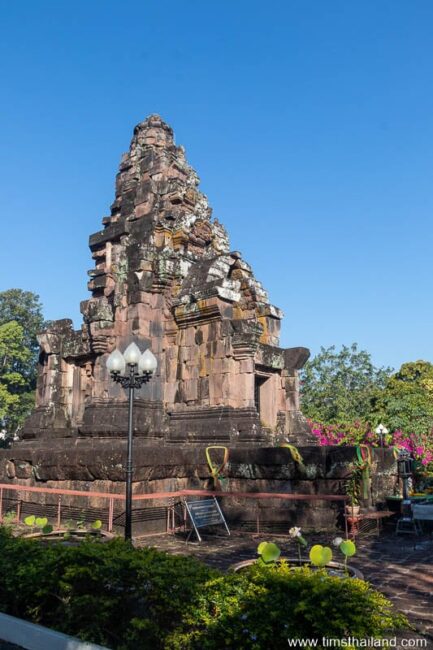
One notable footnote outside the realm of history is that Phra That Narai Jeng Weng is linked to Phra That Phu Phek, atop a mountain 17km to the west, by a fun, well-known legend about an overnight competition between men and women to build the best stupa.
Phra That Narai Jeng Weng has a single, roughly twelve-meter-tall sandstone tower on a laterite base with many carvings still in place. While unfortunately many parts of the prang are missing (hence the unsightly, but structurally necessary concrete), the resulting oblong shape is actually kind of interesting. Presumably there were other structures (an enclosure wall and gopura at least) but nothing remains of them if they did exist.
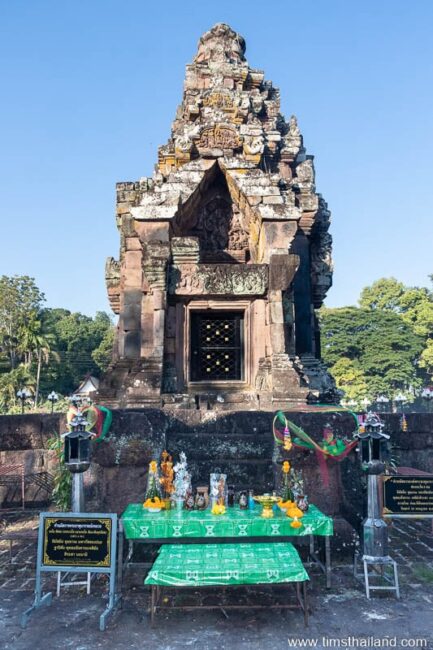
The temple faces east with its only entrance through a short mandapa extending out on this side. The typical Khmer false doors mark the other three sides. The damaged but discernable lintel fronting the mandapa features Indra, guardian of the east, riding his elephant Erawan. Three highly worn elephant antefixes on this face of the upper tower reinforce the Indra veneration.
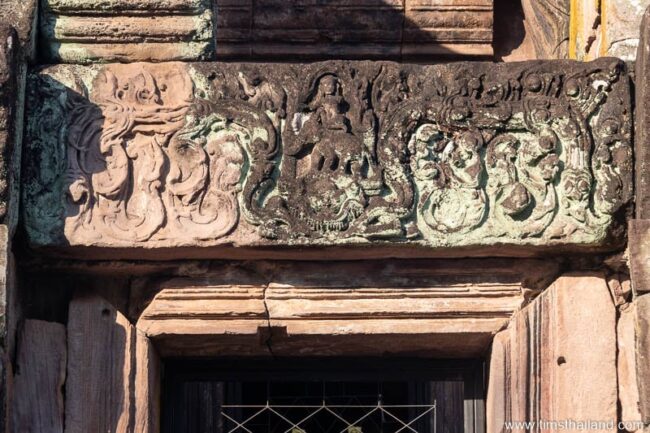
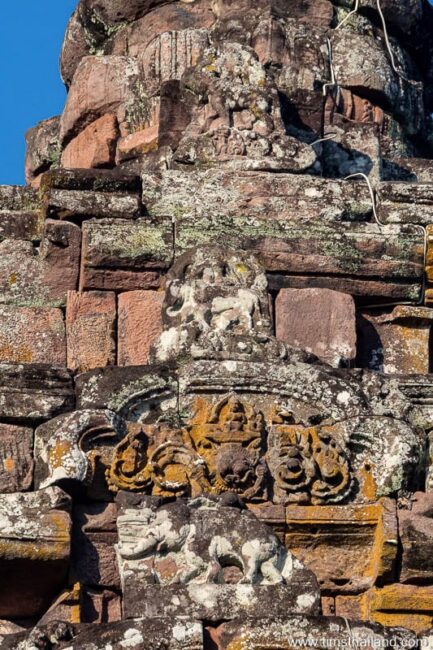
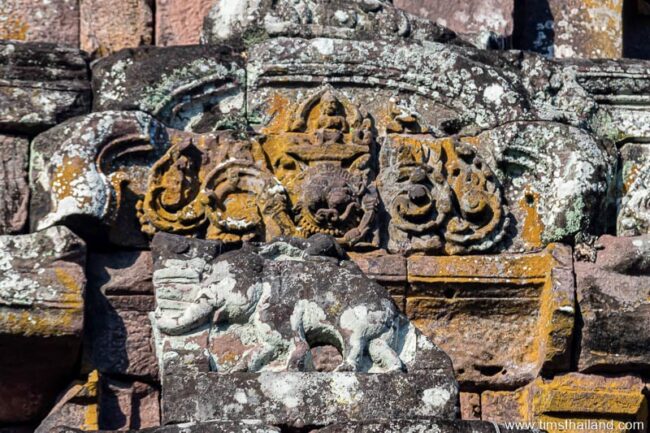
An east facing inner lintel has Krishna holding a singha, a lion-like creature from the Himmapan forest, in each of his hands. He’s standing atop a Kala head, though it’s been broken off and only one of his arms remains.
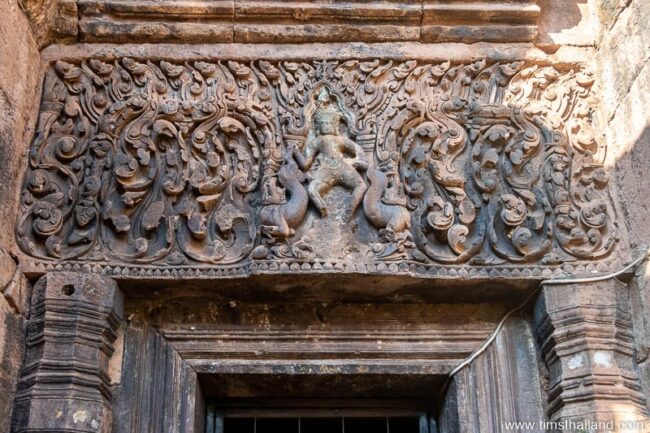
Much of the top of the mandapa is missing, which has exposed the inner pediment, a dancing Shiva (doing the dance of destruction) with twelve arms instead of the normal ten. He’s surrounded above and below by smaller gods, two of which are identifiable: his loyal female disciple, Karikkal Ammaiyar, sits to his right, and Ganesha is the third god to his left.
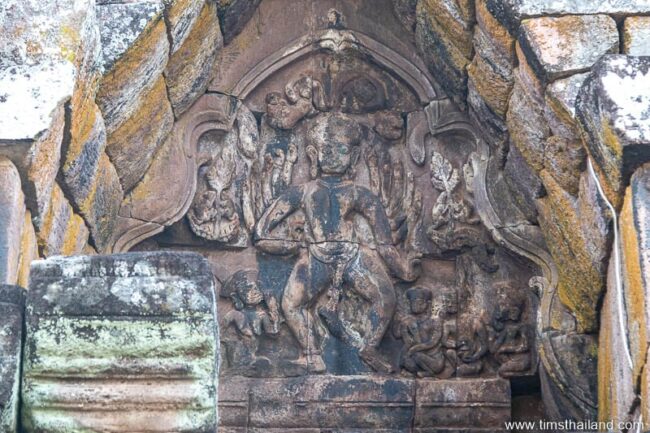
Inside the prang, which is gated off, are many buddhas; nothing original from the Khmer era remains. The main Buddha, probably installed when the Lan Chang ruled Isan, receives regular worship on the green table down below at the front of the prang.
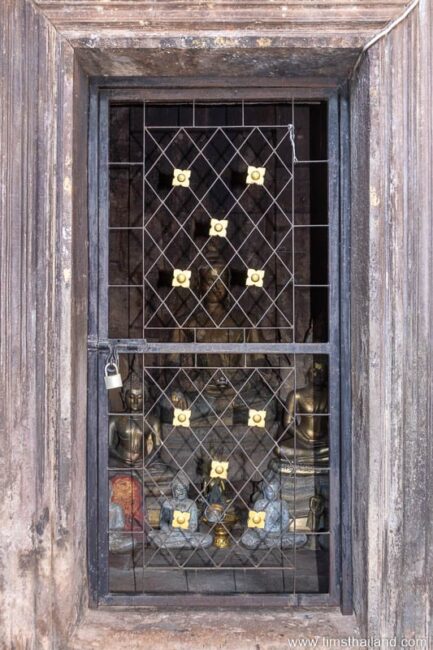
Around to the south is an interesting lintel with the undecipherable story told in two rows. On the bigger bottom half is a military procession with someone important riding an elephant amidst soldiers. Above it, an unknown deity sitting amidst worshippers watches over the proceedings below. Some people feel some of the damaged faces look simian, in which case this could be a scene from the Ramayana, but they all look human to me. Another suggestion is that it’s a manifestation of power, since Sakon was an outpost near the periphery of the kingdom. Regardless, some of the solders are nearly perfectly preserved and you can clearly see their clothes.
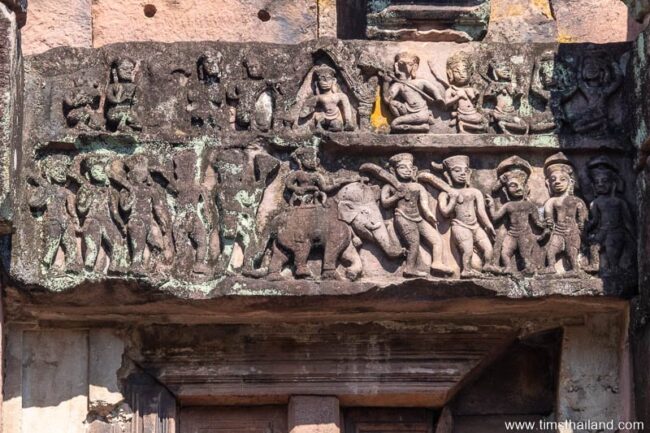
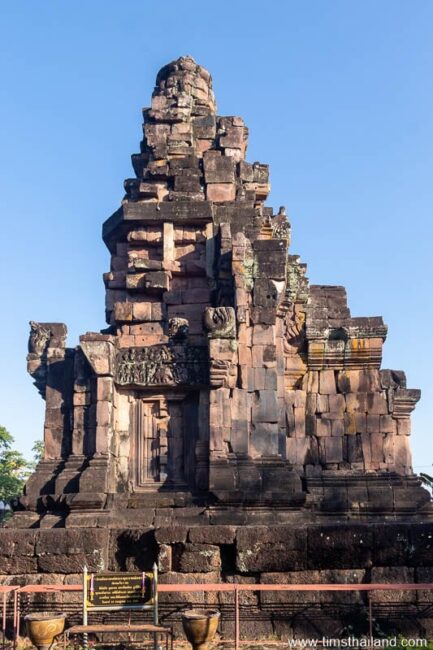
The western lintel is seriously damaged, but it’s still unmistakably Krishna subduing the multi-headed naga Kaliya.
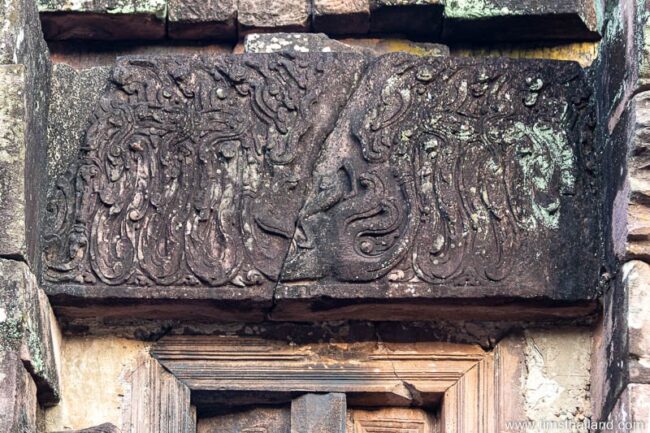
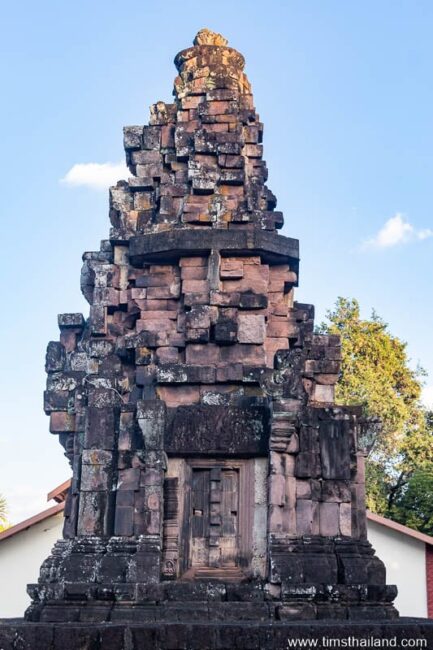
The northern lintel, the best preserved of the five, has a third depiction of Krishna, this time battling an enormous singha, which is grasping the legs of two deities.
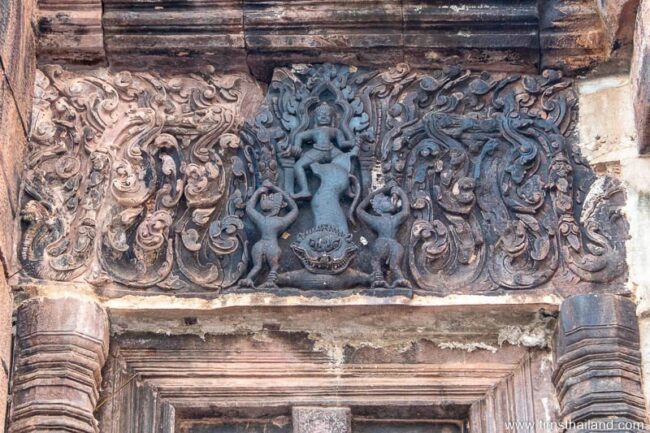
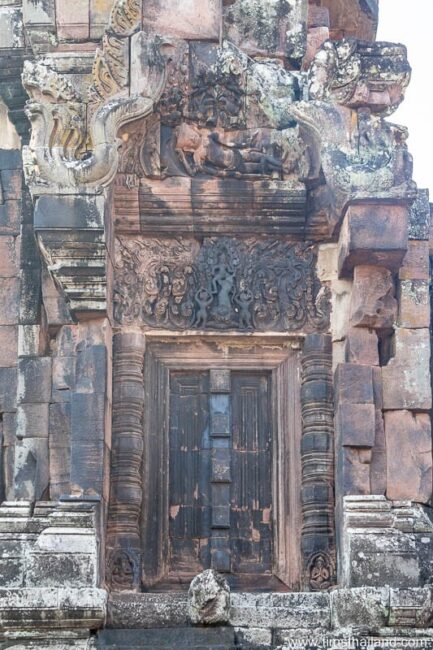
The northern pediment is a reclining Vishnu (“Phra Narai” in Thai), and the name Narai Jeng Weng (Jeng weng is a Thai-ified pronunciation of the Khmer for “long legs.”) is presumed to come from it, even though his legs are normal length. What the Khmer called this temple is unknown. This scene represents the Hindu creation myth. Vishnu is reclining in the sea of eternity, represented by the naga, and Brahma, the Creator, sits atop one of the lotuses growing from his navel. Though heavily damaged and hard to make out, three of Brahma’s faces are visible below the westernmost of the two ducks flying amidst the flowers.
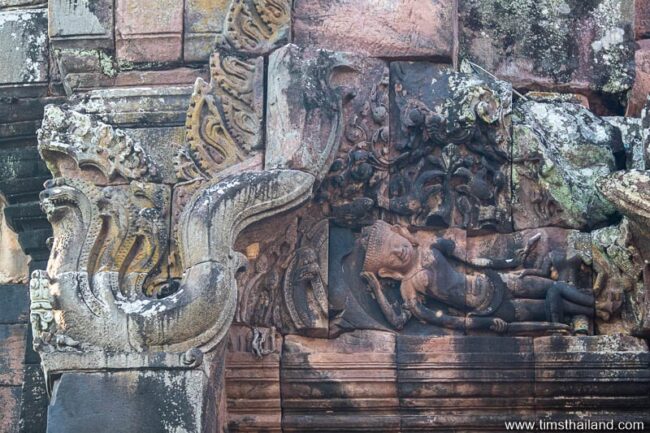
At the bottom of the northern doorway, often not even noticed by visitors, is perhaps the most interesting aspect of Phra That Narai Jeng Weng: a carving at the end of the somasutra, which is the channel use to drain the holy water that is poured over the statue inside the central chamber. While somasutras were common features of Khmer ruins, today few are found intact in temples. Despite being heavily damaged, it appears to be an animal head with a long snout, perhaps a kochasi, a powerful half-lion, half-elephant denizen of the mythical Himmapan forest.
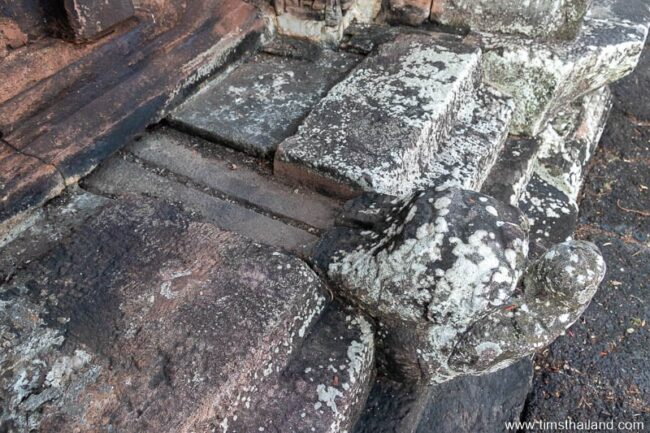
Most of the excess sandstone that couldn’t be used during the restoration is piled up alongside the parking area west of the temple. Take your time looking around here as there are several significant carvings including a pedestal for a statue with small holes that appear to be for keeping offerings (such as gems or gold leaf) and a piece of pediment with the fight between the monkey kings Vali and Sugriva from the Ramayana.
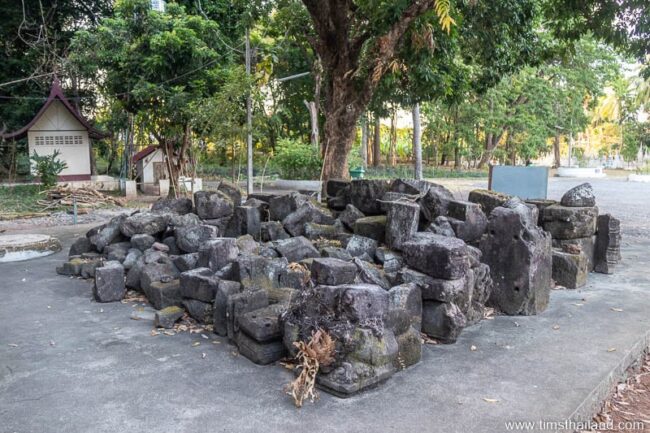
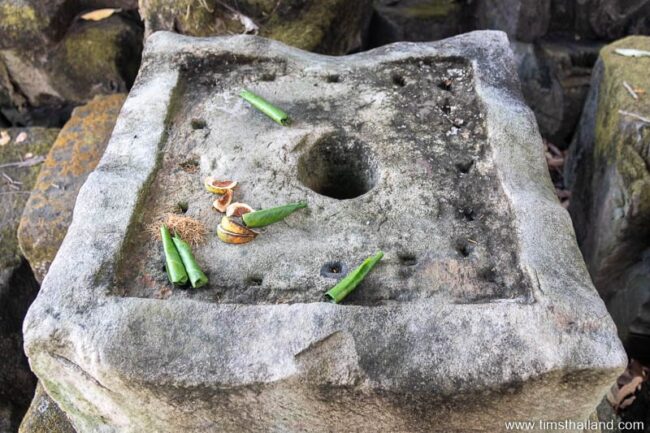
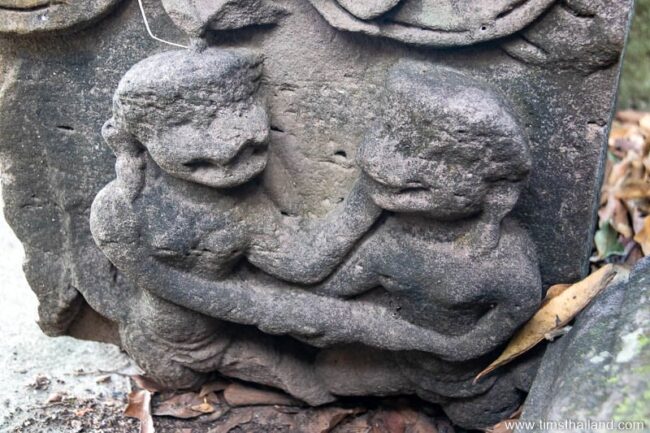
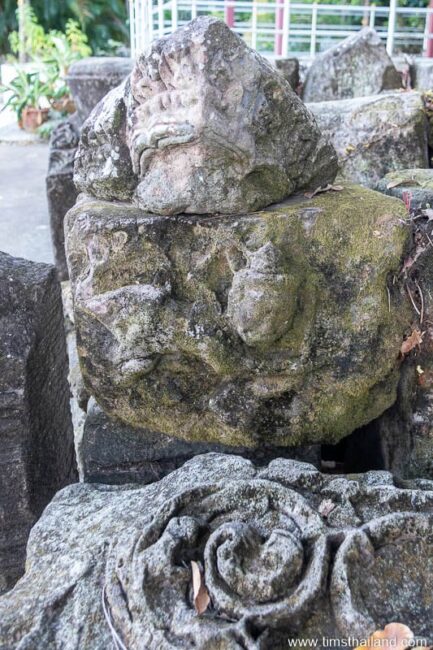
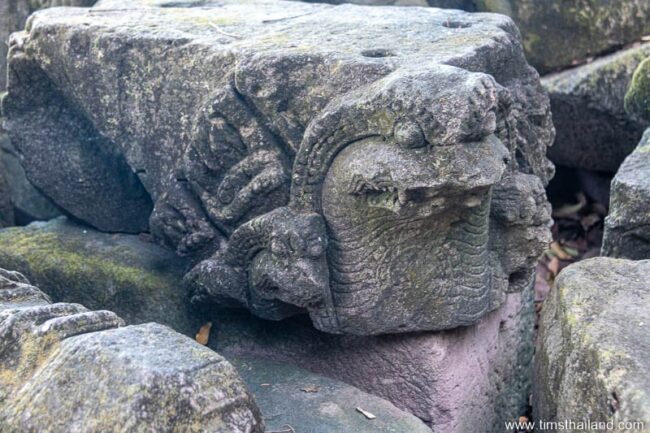
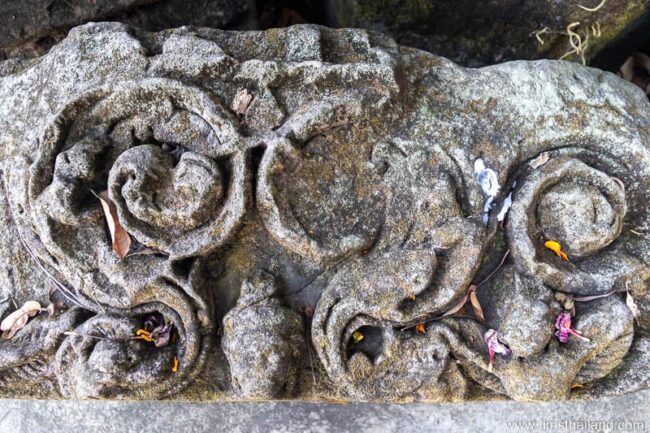
A second set of excess stone blocks, none with any carvings visible, has been stacked into a low wall around a modest Buddha southeast of the prang.
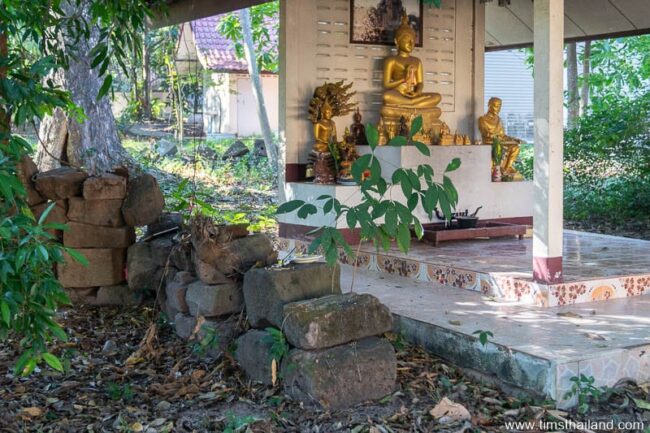
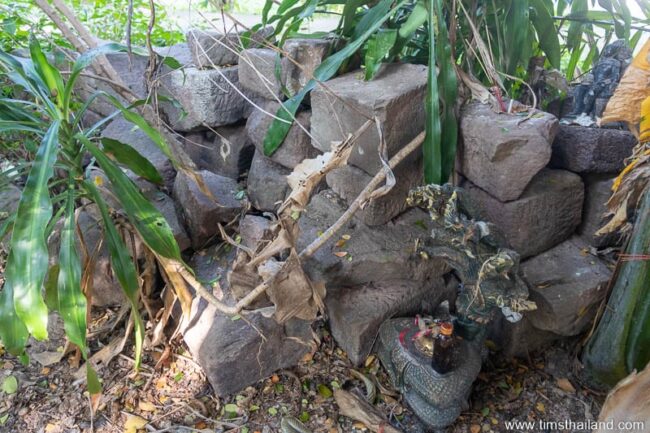
Finally, three naga antefixes from the prang flank the large Buddha in the wihan, the building right in front of the prang.
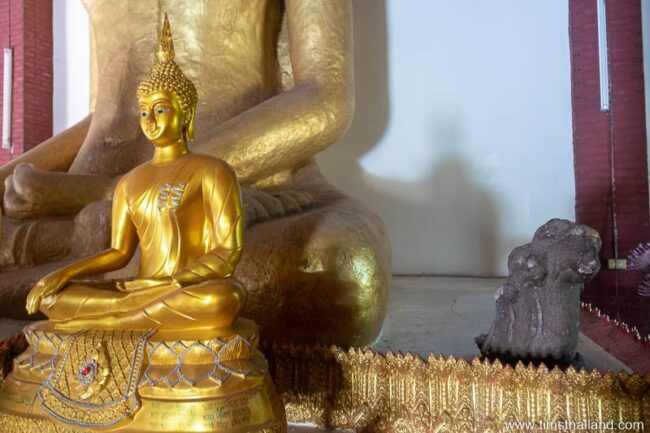
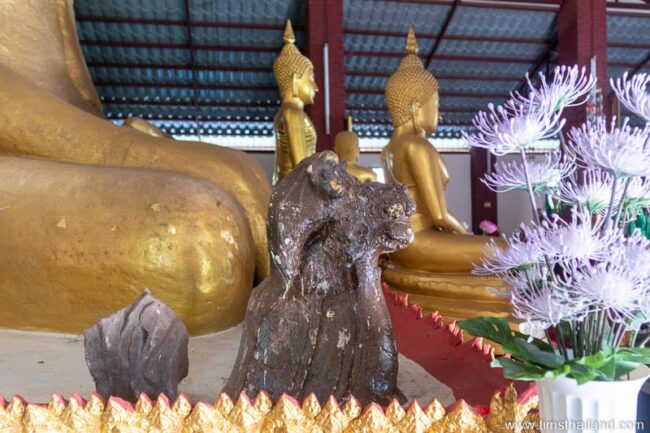
Location – Wat Phra That Narai Jeng Weng, Ban That Naweng, Tambon That Choeng Chum, Amphoe Mueang, Sakon Nakhon Province
Other Names – Prasat Narai Jeng Weng (ปราสาทนารายณ์เจงเวง), Prasat Phra That Narai Jeng Weng (ปราสาทพระธาตุนารายณ์เจงเวง), Phra That Narai Cheng Weng, Phra That Narai Jaeng Waeng